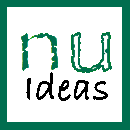Third International Symposium on
Academic Writing and Critical Thinking
Guest editor
Chad Nilep
Introduction
Dear reader:
Once again it is my privilege to introduce the proceedings of the Symposium on Academic Writing and Critical Thinking. The third symposium was held at Nagoya University on 18 February, 2017. As in years past, the symposium brought together scholars from across Japan, as well as presenters from overseas. The symposium included three invited talks, a plenary session, and a roundtable discussion, as well as six parallel sessions.
The symposium theme was Clarity & Impact. In addition to remarks on academic writing in English, French, Chinese, and German, this year's symposium included presentations on reading, presenting work orally, and using corpus tools to improve research writing.
During the first invited session, John Peterson from the Program in Writing and Rhetoric at Stanford University described the importance of reading rhetorically to improve skills important both for understanding texts and for producing writing with clarity and impact. We are pleased to include here a special presentation of Dr. Peterson's remarks. The invited session also included “10 Best Practices to Support Writing Instruction” from Paul Wadden of International Christian University. Professor Wadden and Professor Peterson have also contributed a paper on best practices to these proceedings.
The plenary talk, “The Secret of Building a Logical Argument and Cultural Influence on Research Writing” by Nagoya University Writing Center faculty Paul Lai and Nicolas Baumert introduced a useful approach to logical structures for research writing. Professor Baumert also discussed his experience as an editor, negotiating the different rhetorical expectations of French and Japanese readers and writers. Successful writing for an international audience requires sensitivity to logical, rhetorical, and cultural expectations for the genres of research writing.
Professor Takeshi Kawamoto of Hiroshima University also presented work, developed with his colleagues in the Life Science Dictionary Project, on the use of corpus linguistics to unravel issues of language usage for researchers in specific fields – in this case the life sciences. Writing academic papers for specialized audiences is always a challenge, and especially so for researchers writing in a second language. As the paper by Professor Kawamoto and his colleagues describes, the Life Science Dictionary can help scientists understand specific usages necessary to communicate their work effectively to a specialist audience.
The symposium also featured parallel sessions on critical thinking, writing style, presentation, pedagogy, Chinese language, and German language. Markus Rude of Nagoya University has prepared a brief summary in English of talks from the German language session. We are pleased to present here some of the work that was developed in these symposium sessions. The organizers also wish to thank all of the participants in the symposium. It is thanks to the efforts of many scholars and educators that we are able to share this work.
Chad Nilep
Department of Academic Writing Education
Nagoya University
Contact NU Ideas:
nuideas@ilas.nagoya-u.ac.jp
